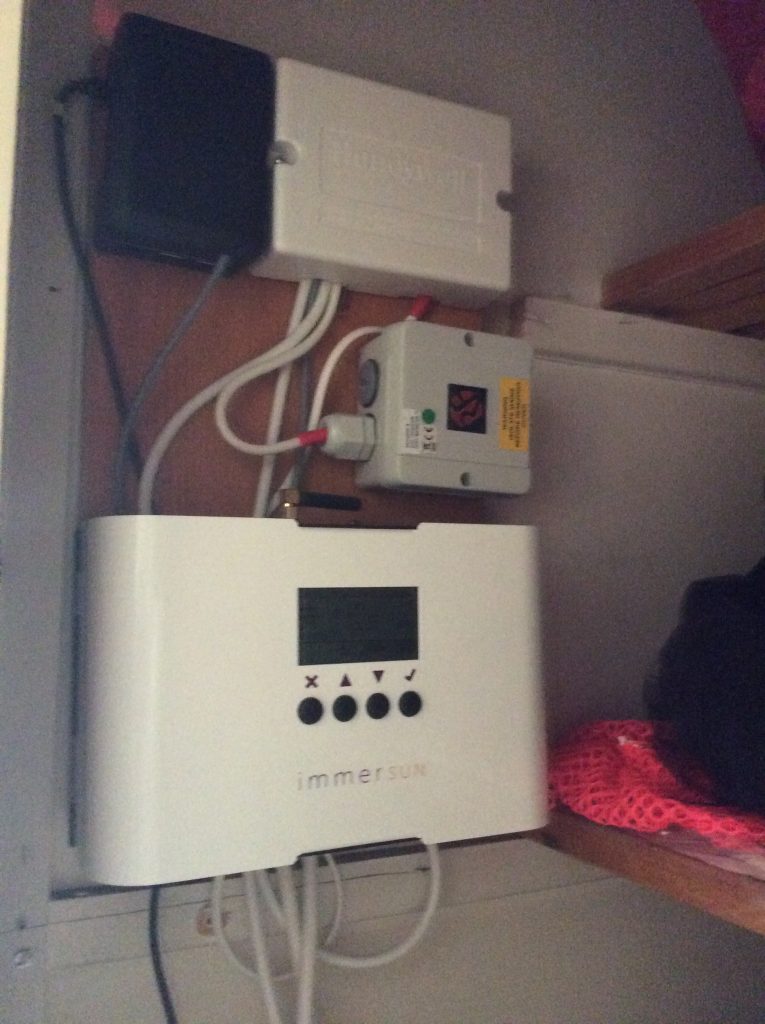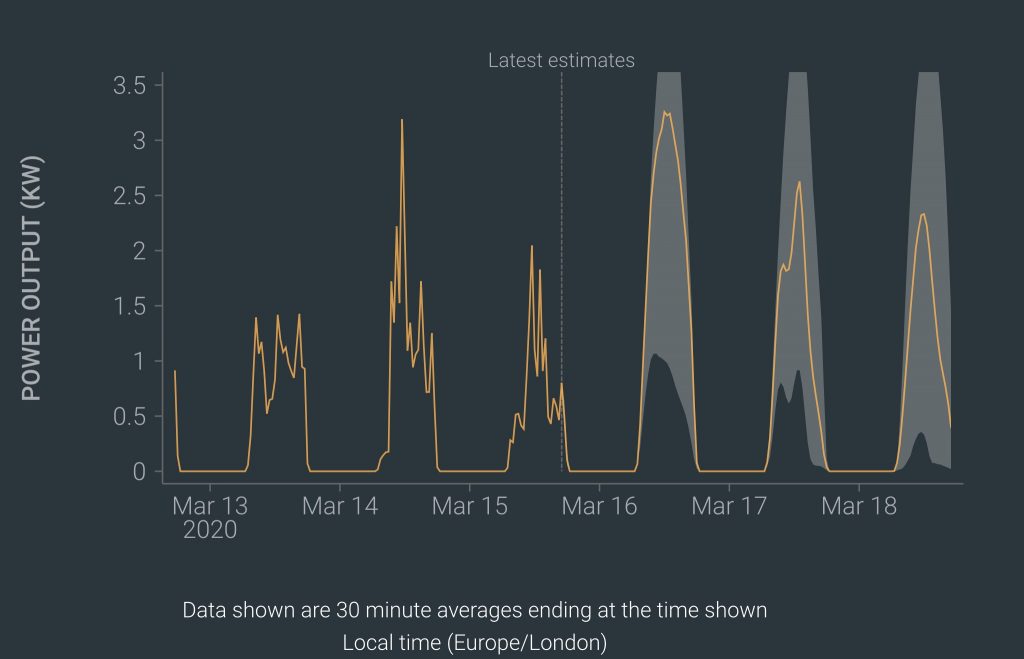Regular readers may recall that our hot water can be generated in 3 different ways: (i) conventional gas boiler, (ii) from grid electricity and (iii) from the surplus on my own solar panels. Attractions of these options are that gas is always available and stable in price, but my grid electricity is lower carbon and may at times be cheaper than gas, and my solar electricity is lowest in both carbon and cost but is subject to significant daily and seasonal variation.

Hot water cylinder with immersion heater 
Smart controls – HEMS and immersun.
The logic to sort out which source to use is managed by my HEMS. Gas is the baseline and the gas boiler is set to heat water for an hour a day in the early evening to ensure that baths etc are possible. The heating is thermostatically controlled so it doesn’t heat if the water is already hot, and that thermostat is set slightly lower than the immersion thermostat too.
The ImmerSUN normally operates automatically to divert surplus solar electricity proportionately to the immersion heater after the needs of general house load, battery charging and car charging have been taken. However if the electricity price is negative (yes, really) then the HEMS may override the ImmerSUN so that water heating is not done by free solar but instead may be delayed to allow use of paid-to-use electricity.
The final part of this triumvirate is buying electricity from the grid to heat water. Here the price of bought electricity is compared either to the price of gas and a decision made to use electricity when it is cheaper (it’s always lower CO2), or compared to the price of surplus solar (effectively zero) to buy from the grid. Both of these are obviously comparisons with a price threshold but until now the choice of threshold has been made manually – typically against gas in winter when solar output is limited and against solar in summer when more readily available. However the reality of UK weather is that this is a compromise as it may be very sunny one day but very dull the next.

The new refinement therefore is to use the existing solar forecasting integration. Solar forecasting already informs HEMS decisions about when to charge the storage battery from the grid and when to operate the wet goods (dishwasher and washing machine). The latest change is that the solar forecasting is now also use to choose whether to base a decision to buy electricity for water heating against a threshold related to the gas price or against the price of surplus solar PV.

The above schedule shows that, as a result of no significant solar production anticipated on the 4th, the HEMS has compared electricity price to gas price and thus elected to buy electricity from the grid to make hot water overnight since at 1.7640 to 2.4675 p/kWh electricity is cheaper than gas.
